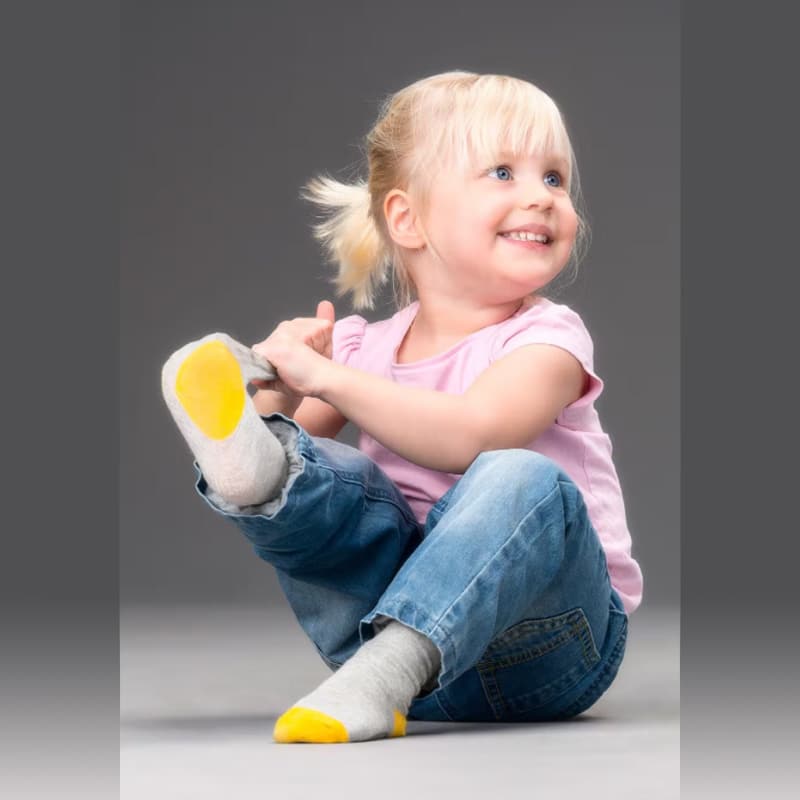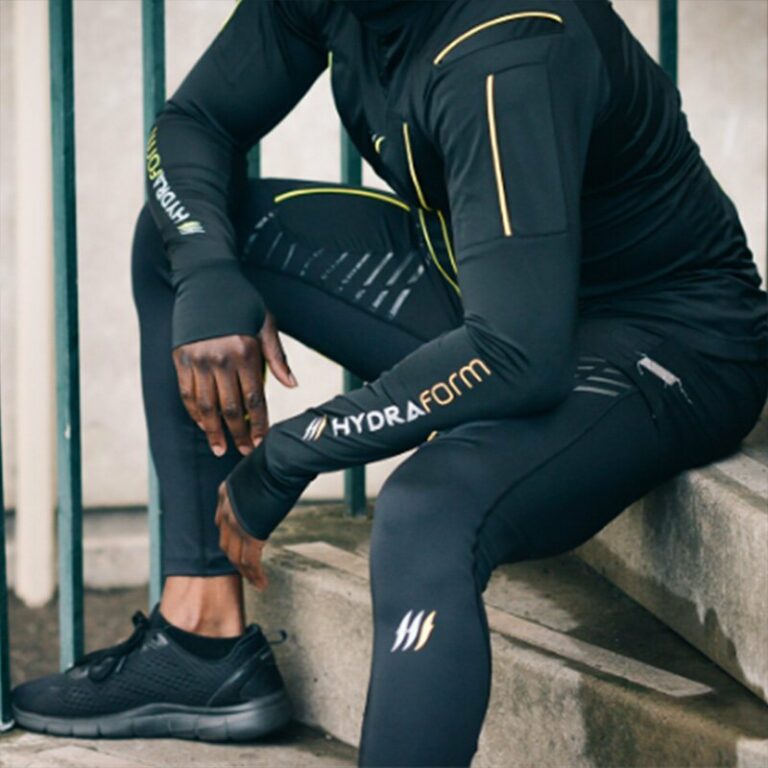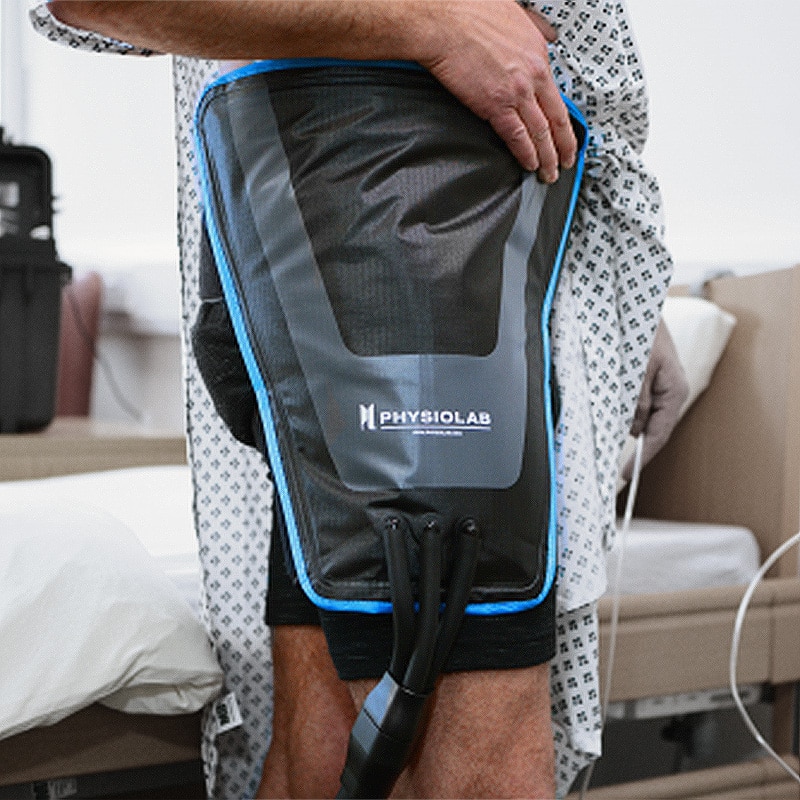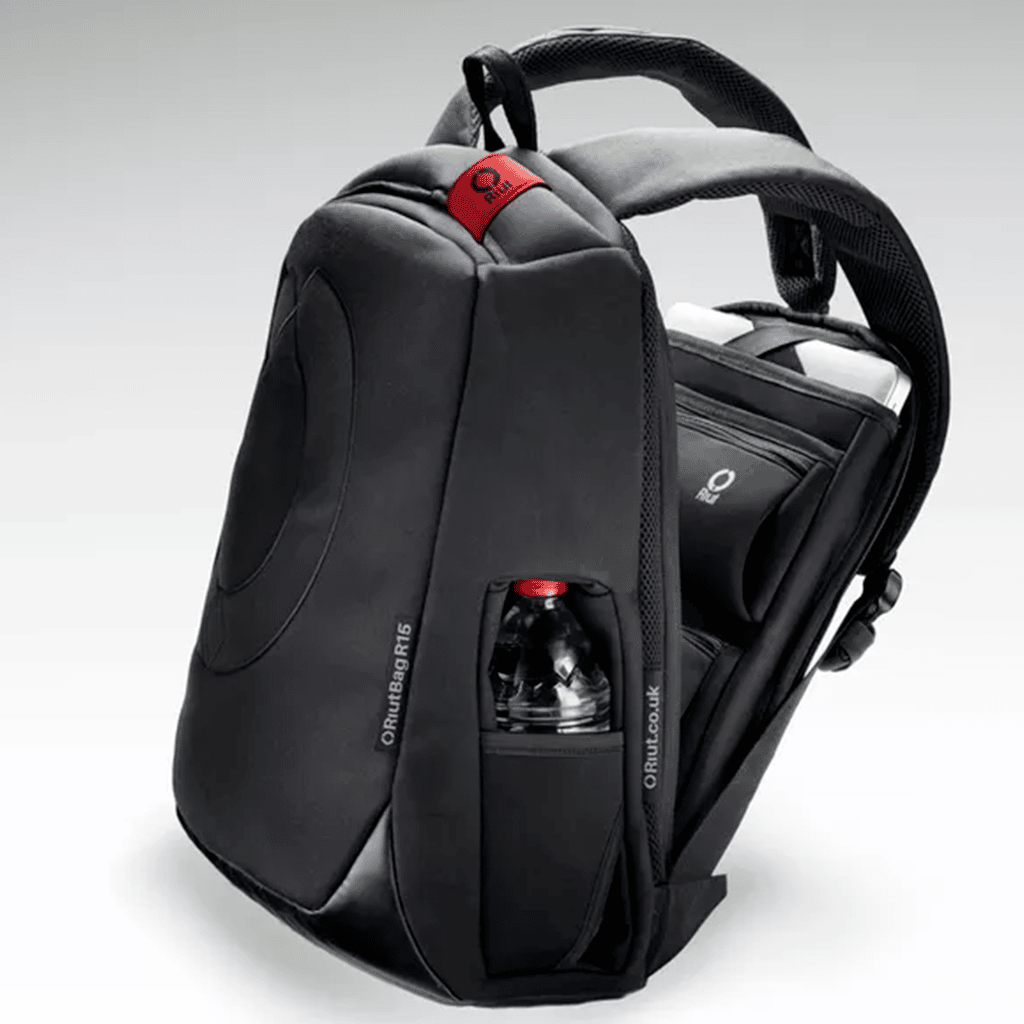Prototyping Sewn Products
An introduction to Prototyping Sewn Products.
Often prototyping a technical sewn product such as work wear, rucksacks or laptop bags will involve multiple stages to develop the concept fully. The first prototyping stage is most likely a basic physical model that is a proof of concept to establish the core functionality. This is shown in the top image on the right. It doesn’t look pretty, it isn’t the right colours but it does prove the core function.
In this case the example is a knee pad. This first basic physical model was to prove that the knee was adequately protected and that the pad did not slip down in use by carpet fitters or roofers.
Improvements identified by the testing of the basic physical model were the need for a more flexible joint above the knee, straps needed to be wider and improved grip was required from the inner fabric against work trousers.
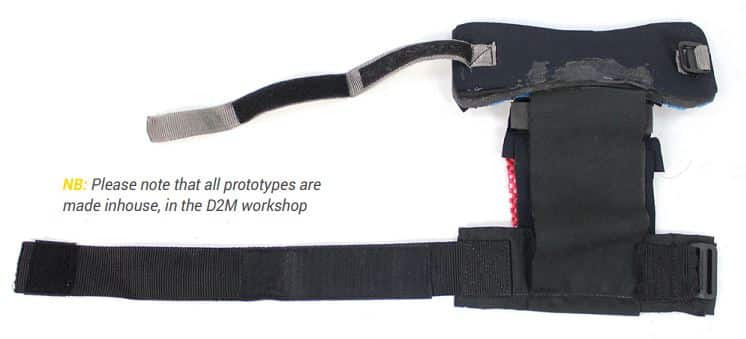
The next level of sewn fabric prototype is often referred to as Mark 1 prototype as it is the first proper prototype. The materials are now more similar to the production materials and the colours are more representative of the design intent. The dimensions have been improved and it is finished to a higher standard although it is not of the quality of an ‘off the shelf’ product.
The purpose of this prototype is to get feedback from the target market. Basic physical models are not often of a high enough quality to gain proper feedback as you just end with a list of things that everyone although knew needed to be improved!
The following improvements to the sewn prototype were identified:
Straps were too long for most users
Velcro attachment panels needed to be moved slightly for secure attachment across all users.
Having reviewed the prototype with a sewing manufacturer, it also became apparent that we needed to add binding to improve the look and change the construction in a few areas to reduce production time and therefore cost.
In this case the example is a knee pad. This first basic physical model was to prove that the knee was adequately protected and that the pad did not slip down in use by carpet fitters or roofers.
Improvements identified by the testing of the basic physical model were the need for a more flexible joint above the knee, straps needed to be wider and improved grip was required from the inner fabric against work trousers.
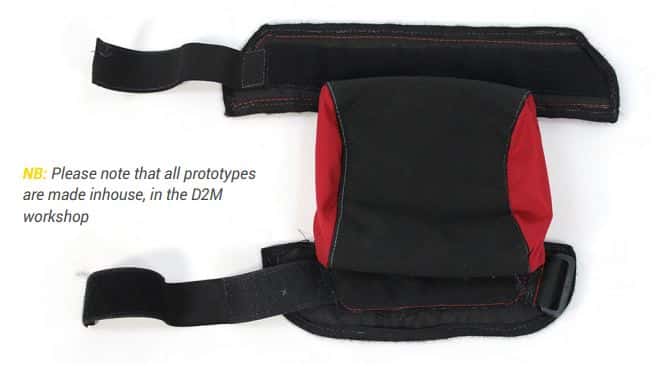
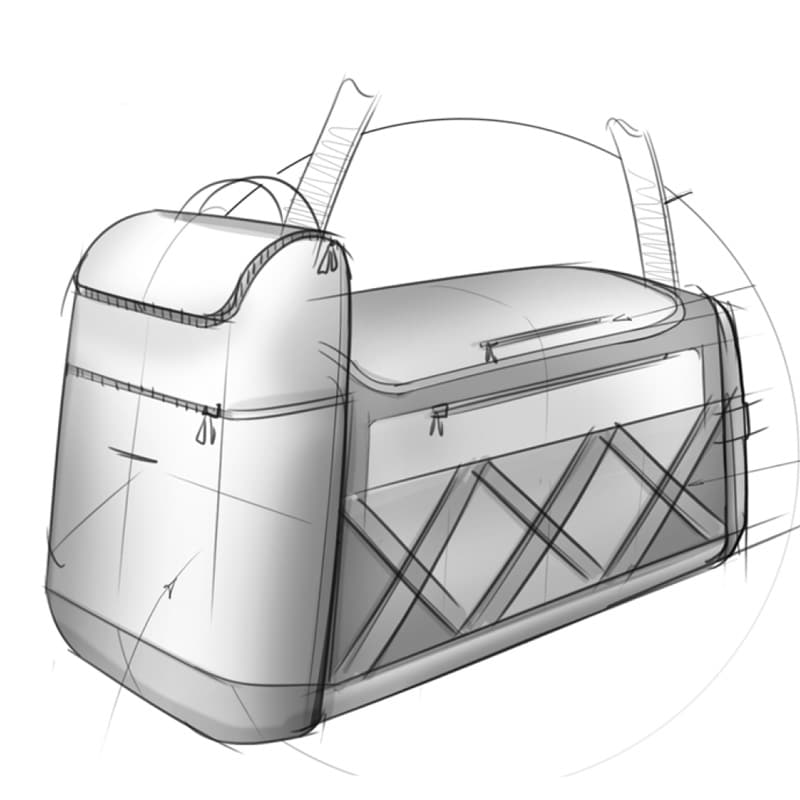
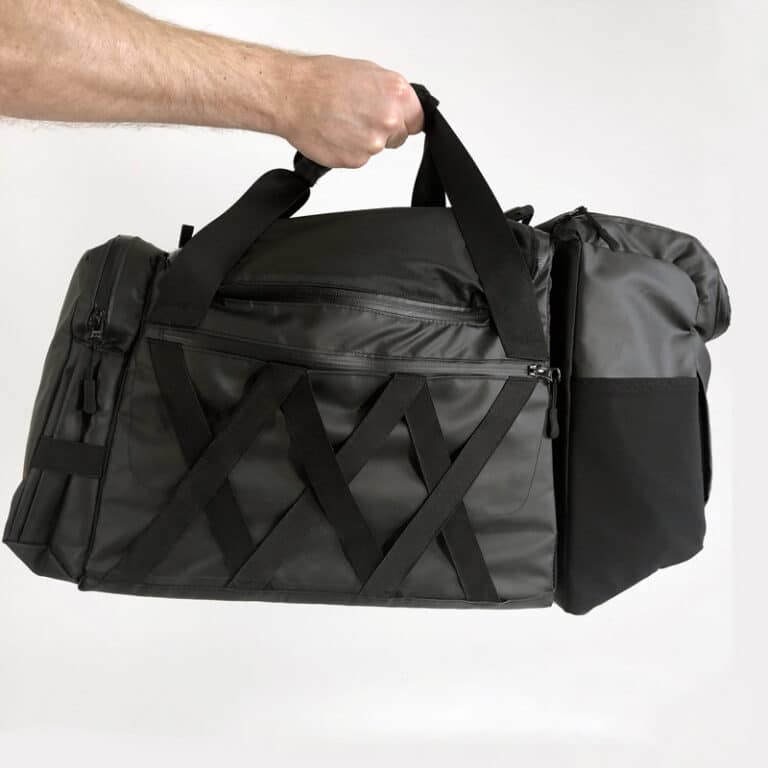
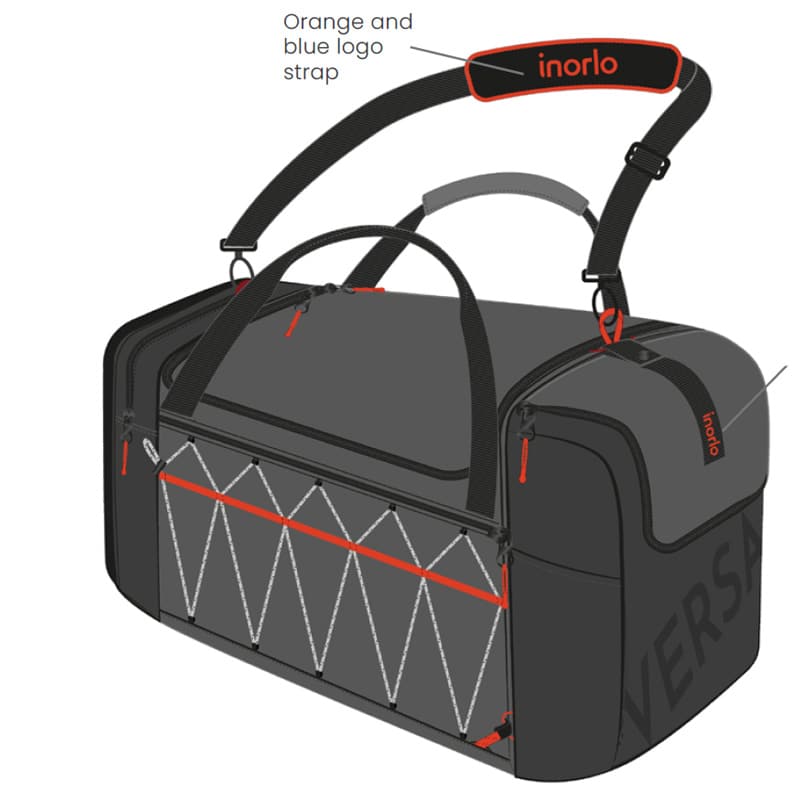
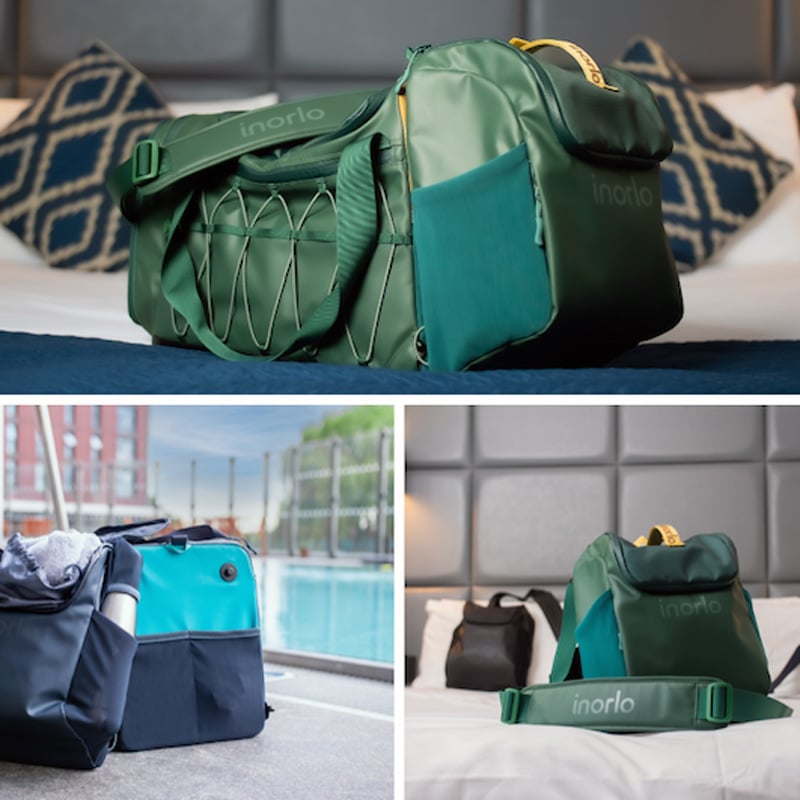
The Mark 2 prototype could have been produced in D2Ms sewing workshop but it was more cost effective at this point to sample with our soft goods factory. The textile manufacturer worked from our drawings and MK1 prototype to make the following improvements:
- Neater Stitching
- Adding the branded PVC badge
- Printed textile side panels to our design
- Care Label
- Lycra Hinge for improved flexibility
- Materials change on one panel to neoprene for strength
- Increased the opening on the back of easier insertion of the pad
These changes are fairly representative of what can be expected to be improved in the jump from prototyping to sampling.
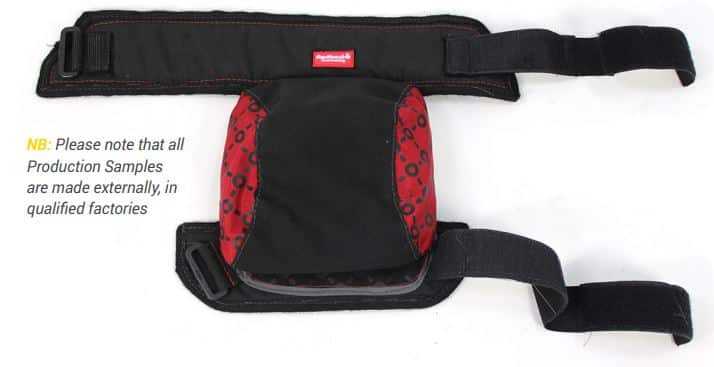
Factories can sometimes cheapen products to try to reduce costs and so this needs careful management. This product took two further samples until our client was happy with the material selection of each fabric, the stitching and all the details. The final sample is pictured bottom right.
The process can take as much as 18 months to complete for highly complex products with slow sewing manufacturers. Equally we have developed textile products in as little as three months with responsive clients and sewing factories if the product is relatively straightforward such as this kneepad.
Redback kneepads can be purchased here: Amazon | RedBacks Kneepads
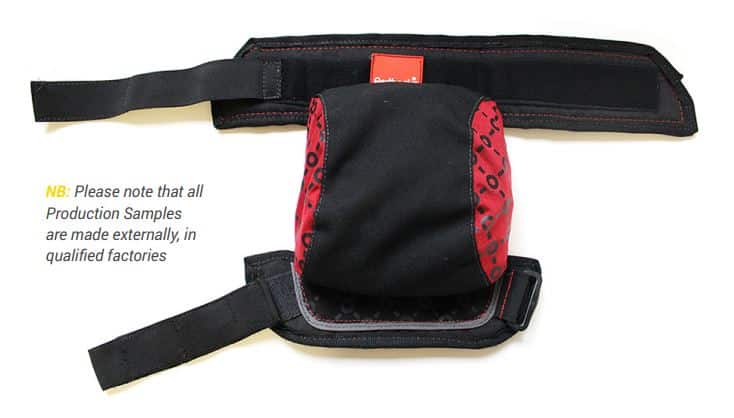
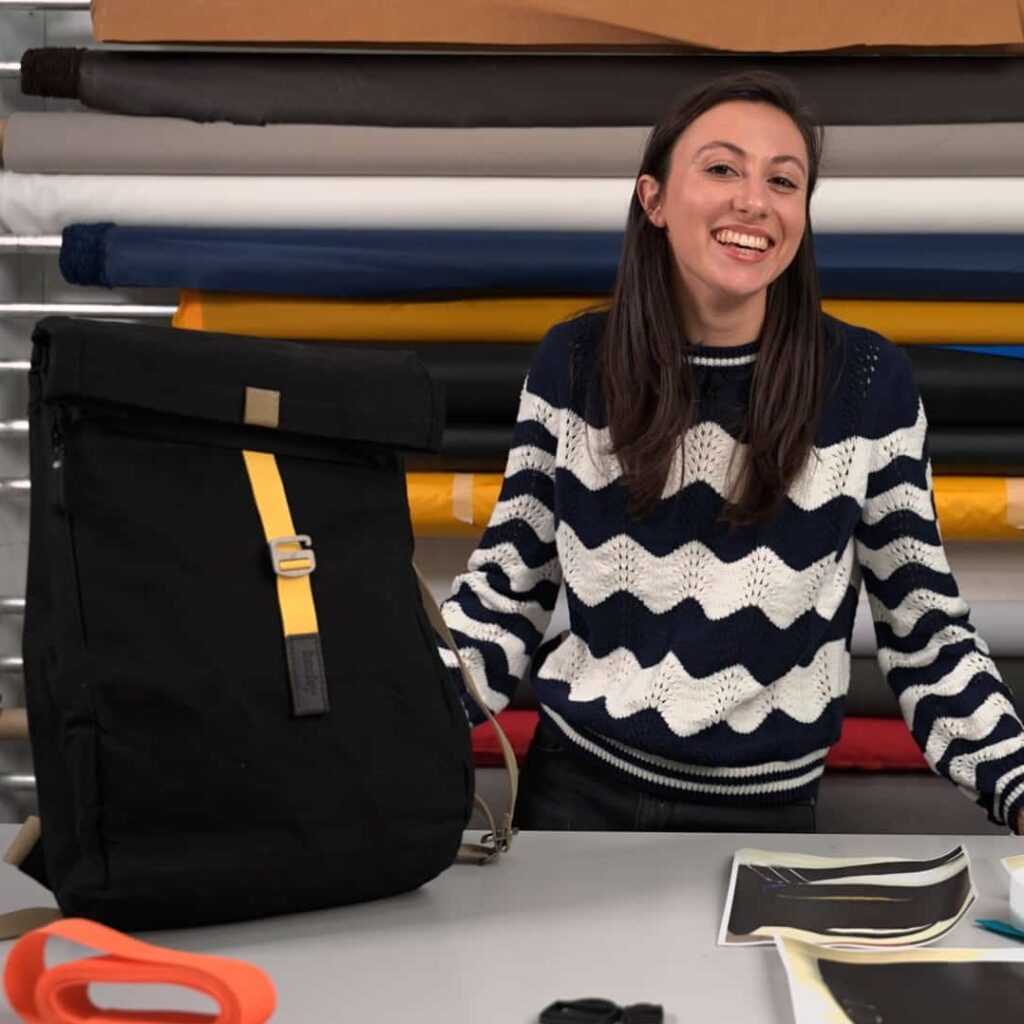
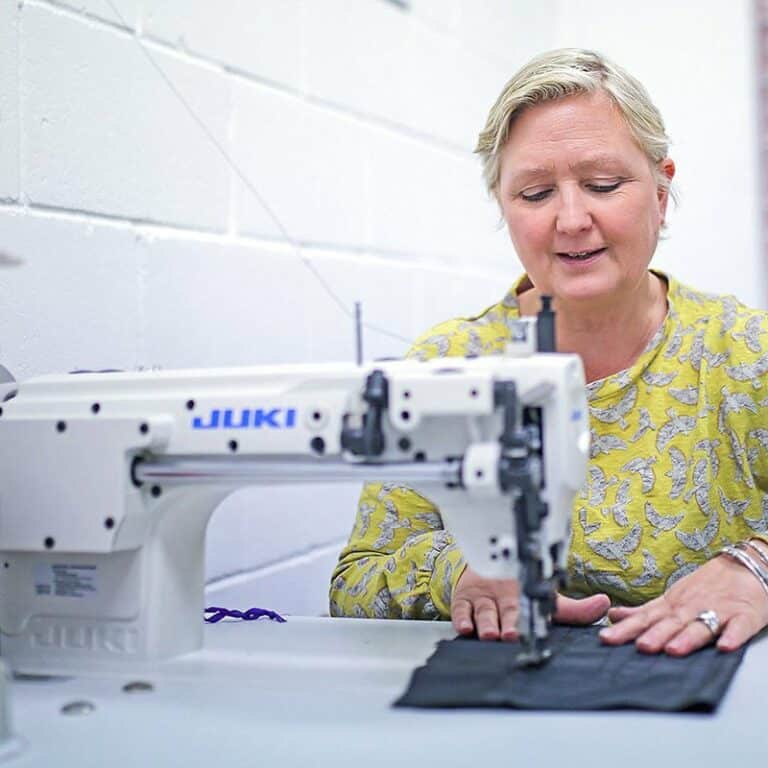
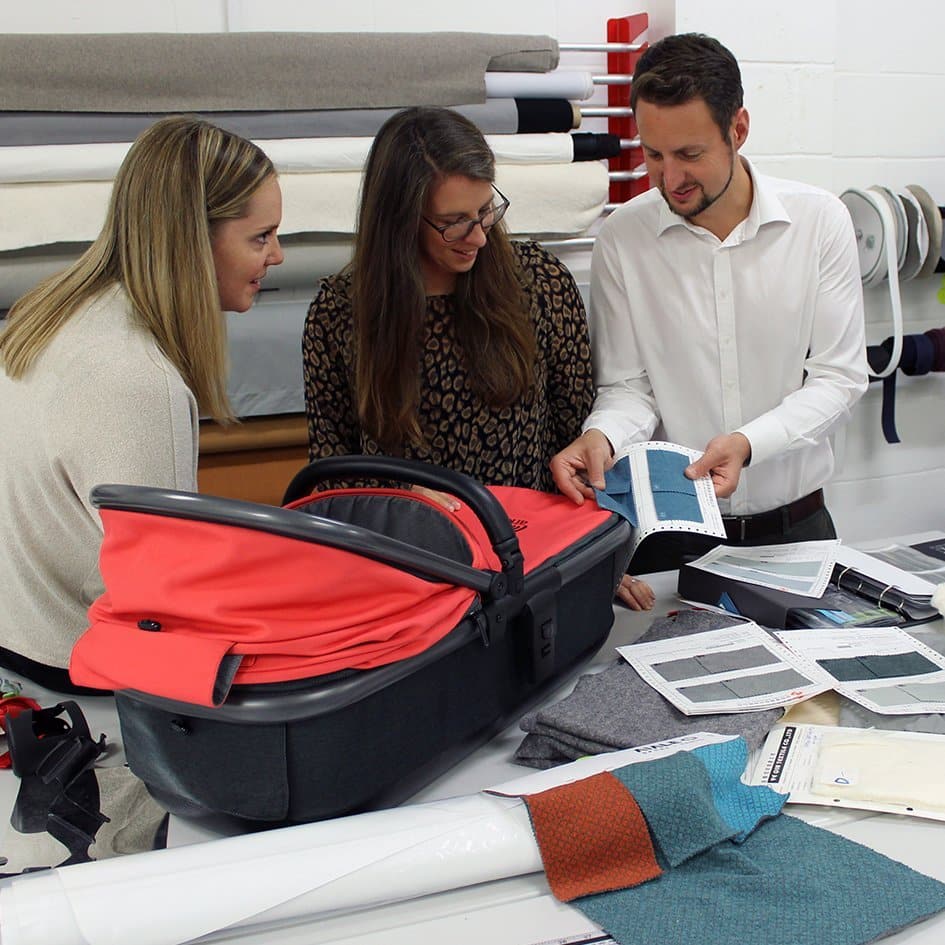
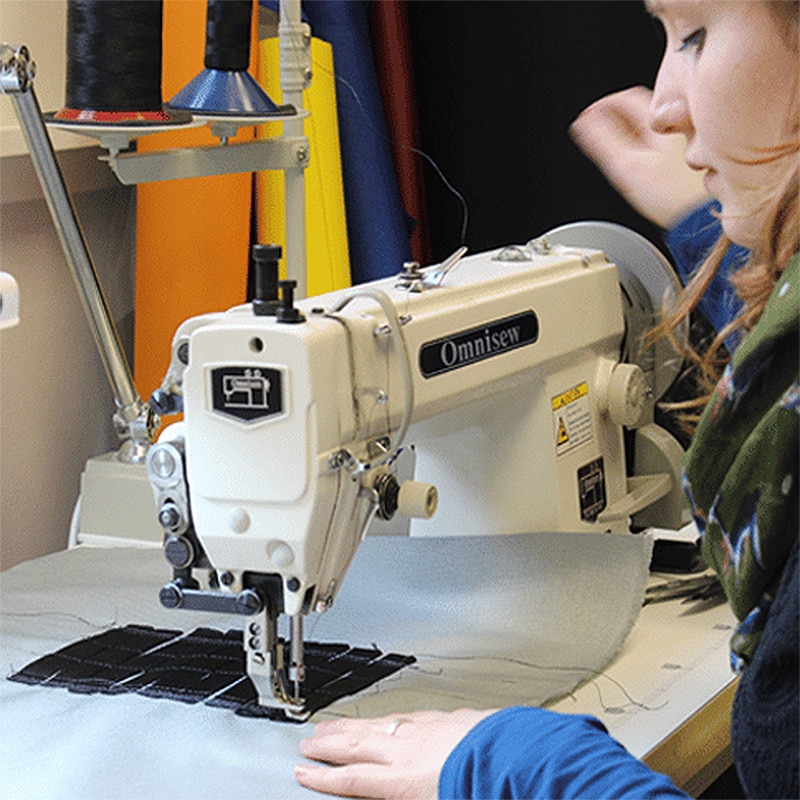
We’ve worked with a number of clients to bring innovative textile products to the market.
Do get in touch if you have a sewing project or any type of textile product, we’d love to hear about it! If you would like to carry on reading more about designing sewn products click here.
If you’ve got a project for a fabric product but don’t know how to go about developing it, contact us today and we can arrange a call to discuss it.
Do you want to discuss a sewn product?
If you’re looking to develop a new product or re-design an existing range but lack the in-house capacity or expertise to make it a reality, get in touch with us today to discuss your requirements.
